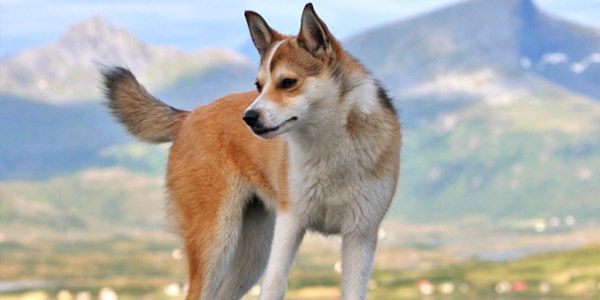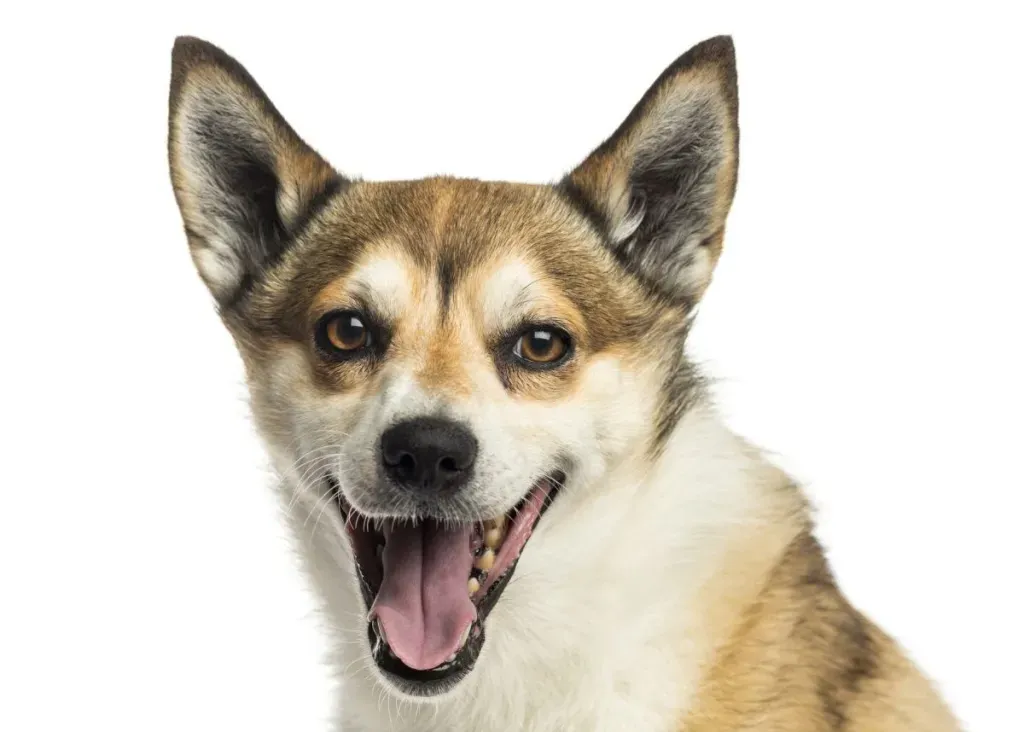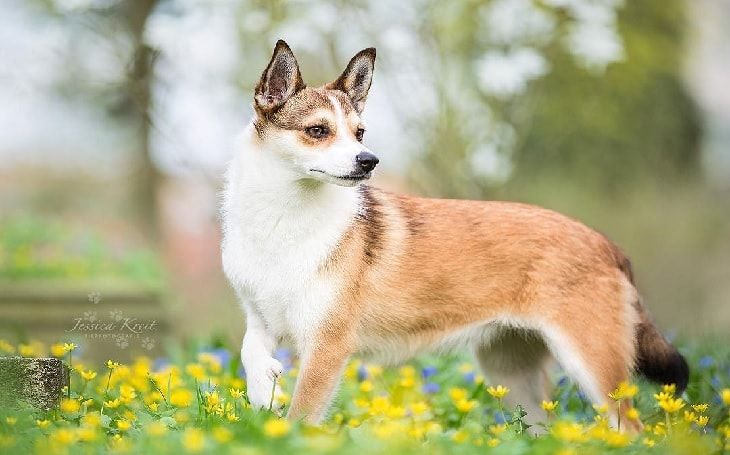The Norwegian Lundehund is a unique and fascinating breed known for its extraordinary history, distinct physical characteristics, and charming personality. In this article, we will delve into the world of the Norwegian Lundehund, exploring its rich heritage, special adaptations, and suitability as a family pet.

History of the Norwegian Lundehund
The history of the Norwegian Lundehund is a captivating journey that dates back centuries. This remarkable breed, also known as the Norsk Lundehund, has its origins deeply rooted in the coastal regions of Norway. The Lundehund's historical narrative is not only a testament to the breed's resilience but also sheds light on its unique purpose and development.
The Norwegian Lundehund's primary historical role was as a skilled puffin hunter. Puffins, with their delectable meat, were a valuable dog food source for the coastal communities of Norway. However, the puffins nested in narrow cliff crevices that were inaccessible to most predators. It was in this challenging environment that the Lundehund's distinctive attributes began to evolve.
These dogs, through generations of selective breeding, developed a set of remarkable physical characteristics that set them apart. Foremost among these features is the presence of six toes on each paw. This unusual polydactyl trait, combined with an astonishing level of flexibility in their limb joints, enabled them to navigate treacherous cliffs and crevices with unparalleled agility.

Another extraordinary adaptation is the Lundehund's exceptionally elastic neck, which allows it to turn its head a full 180 degrees backward. This neck flexibility was a vital asset for a puffin hunter, as it allowed the Lundehund to reach into crevices, twist, and turn to extract puffins with minimal effort.
The historical records also indicate that Lundehunds were often kept in large numbers by Norwegian puffin hunters, sometimes up to a dozen dogs per household. Their importance to the local economy and food supply was significant, and these dogs played an integral role in the sustenance of coastal communities.
As time passed, the Lundehund's hunting purpose became less vital, and the breed's numbers dwindled. However, dedicated efforts by enthusiasts and breeders have ensured its survival, and today, the Norwegian Lundehund is recognized as a unique and treasured breed, celebrated for its rich history and one-of-a-kind characteristics.
In conclusion, the history of the Norwegian Lundehund is a testament to the breed's exceptional adaptability and the close bond it shared with the coastal communities of Norway. Its legacy as a skilled puffin hunter lives on, and today, the Lundehund continues to captivate the hearts of those who appreciate its remarkable history and unique physical attributes.
Unique Physical Characteristics
The Norwegian Lundehund stands as a testament to nature's adaptability and the incredible diversity found within the world of dog breeds. It is a breed that defies conventional norms with its extraordinary physical characteristics, each feature finely tuned for a specific purpose, rooted in its historical role as a puffin hunter.
One of the most striking physical features of the Lundehund is its polydactyl nature. Unlike most dogs with five toes on each paw, the Lundehund boasts six toes, a rare and distinctive trait. This adaptation provides them with a more substantial foothold on rugged cliffs and allows them to traverse uneven terrain with remarkable dexterity. These extra toes, combined with an intricate webbing between them, grant the Lundehund an edge when navigating narrow crevices and rocky surfaces.
Another remarkable aspect of Lundehund's physique is its highly flexible joints. This flexibility enables them to bend their limbs at seemingly impossible angles, making it possible to contort their bodies into the tightest of spaces. It's this incredible joint flexibility that allows them to perform their signature maneuver: bending their head backward to touch their spine, thanks to their uniquely elastic neck.
The Lundehund's head, while small and wedge-shaped, houses a set of keen, intelligent eyes that reflect their alert and curious nature. Their ears, too, are unique. They are upright, firm, and possess a high degree of mobility, enabling them to rotate in different directions to pinpoint sounds, whether it be the call of a distant puffin or the rustle of prey.
The breed's tail is another distinctive feature. It can curl tightly over the back or spread out in a fan-like fashion, depending on the dog's mood and excitement level.
These unique physical characteristics, developed over generations of selective breeding, equip the Norwegian Lundehund for a purpose that no other breed can claim: puffin hunting in the harshest of coastal environments.
Adaptations for Puffin Hunting

The Lundehund's physical adaptations made them the perfect puffin hunters. Their ability to climb steep cliffs and squeeze into tight spaces ensured a steady supply of these birds, which were a valuable food source in the past.
Temperament and Personality
The Norwegian Lundehund is a breed defined not only by its extraordinary physical characteristics but also by a distinct temperament and personality that set it apart in the canine world. Understanding the Lundehund's disposition is essential for those considering this unique breed as a companion.
Independence and Alertness
One of the hallmark traits of the Norwegian Lundehund is its independence. These dogs are not known for blind obedience but rather possess a strong sense of self-reliance. This independence is a legacy of their puffin-hunting days when they often had to make quick decisions in challenging environments.
Their innate alertness is another key aspect of their temperament. Lundehunds are naturally vigilant and responsive to their surroundings. They have finely tuned senses, often picking up on sounds and scents that escape the notice of other breeds. This vigilance can make them excellent watchdogs, as they are quick to alert their owners to anything unusual.
Playfulness and Curiosity
Despite their independent nature, Lundehunds are often described as playful and curious. They retain a youthful spirit throughout their lives and are known for their love of games and exploration. This playfulness can be endearing, making them delightful companions for families.
Their curiosity extends to their environment, and they are not content with a sedentary existence. Lundehunds thrive when presented with opportunities for mental and physical stimulation. Puzzle toys, agility exercises, and interactive play sessions are all ways to keep their curious minds engaged.
Loyalty and Bonding
While Lundehunds may maintain their independence, they are also deeply loyal to their families. Once they form a bond, it tends to be strong and enduring. They are known for their affectionate nature and often seek physical closeness with their human companions.
This loyalty also means that they can be protective of their loved ones. While they are not typically aggressive, they may exhibit protective behavior if they perceive a threat to their family. Proper socialization from an early age can help ensure that this protective instinct is well-balanced and not overly aggressive.
Interaction with Other Pets
When it comes to interacting with other pets, Lundehunds tend to be amiable, particularly if they are socialized with other animals from a young age. Their playful nature can make them compatible with other dogs and even cats, provided they are introduced carefully and gradually.
However, their hunting instincts, though diminished in domestic settings, may still manifest as a strong prey drive. This means that small animals like rodents and birds may pique their interest, so caution should be exercised when introducing them to smaller pets.
Training and Obedience
Training a Norwegian Lundehund requires patience and a firm yet gentle approach. Their independent nature can make them seem stubborn at times, but they respond best to positive reinforcement methods. Consistency and early socialization are critical to ensure they grow into well-adjusted adults.
Training and Socialization
Training and socialization are pivotal aspects of raising a well-rounded Norwegian Lundehund. Due to their unique combination of independence and curiosity, a thoughtful approach is required to ensure they become obedient, well-behaved pets.
Patience and Consistency
Training a Norwegian Lundehund can be a rewarding but at times challenging experience. These dogs have an independent streak and may not always be quick to obey commands. However, patience and consistency in training methods are key. Positive reinforcement techniques, such as treats and praise, work exceptionally well with this breed.
Early Socialization
Socialization from an early age is essential for Lundehunds. Exposing them to a variety of people, animals, and environments helps them become well-adjusted adults. Because of their protective instinct, it is vital to ensure they are comfortable with strangers and other dogs while maintaining their alertness.
Mental Stimulation
These dogs have keen minds and require mental stimulation to prevent boredom. Interactive dog toys, puzzle games, and training sessions that challenge their problem-solving skills are excellent ways to engage their intellect and prevent destructive behaviors.
Exercise Needs
While they don't have exceptionally high energy levels, Norwegian Lundehunds still require regular exercise to keep them physically fit and mentally satisfied. Daily walks and playtime in a secure, fenced area are essential. However, it's crucial to avoid strenuous activities at a young age to protect their unique joints.
Health and Care
The health and well-being of a Norwegian Lundehund are paramount, given their distinctive physical characteristics and susceptibility to certain genetic health issues. Proper care and regular veterinary check-ups are vital to ensure a happy and healthy life for your Lundehund.
Genetic Health Issues
Lundehunds are susceptible to specific genetic health concerns, including gastrointestinal issues, joint problems, and allergies. The unique structure of their polydactyl feet and flexible joints means that they must avoid jumping from heights or engaging in high-impact activities during their growth phase.
Diet and Nutrition
Providing a balanced diet is essential for maintaining their health. Consult with your veterinarian to determine the best diet plan for your Lundehund, considering their age, activity level, and any specific health concerns.
Regular Vet Check-ups
Due to their unique physical characteristics and potential health issues, Lundehunds benefit from regular veterinary check-ups. These visits help catch any health problems early and ensure that their unique needs are met.
Dental Care
Dental health is often overlooked but is crucial for Lundehund's overall well-being. Regular dental care, including brushing their teeth and providing dental chews or interactive dog toys, can help prevent dental issues.
Grooming
Lundehunds have a dense double coat that sheds seasonally. Regular brushing helps manage shedding and keeps their coat healthy. Additionally, their ears, with their unique shape, require regular cleaning to prevent ear infections.

Exercise and Weight Management
As previously mentioned, exercise is essential but should be appropriate for their age and physical development. Maintaining a healthy weight is crucial to prevent joint problems, so be mindful of portion control and treats.
In summary, the Norwegian Lundehund requires careful attention to their unique health needs, including genetic vulnerabilities and joint health. By providing proper training, socialization, and diligent care, you can ensure that your Lundehund leads a happy, healthy life as a beloved member of your family.
Popularity and Recognition

While not one of the most common dog breeds, Norwegian Lundehunds have gained recognition among dog enthusiasts worldwide. They are appreciated for their distinctiveness and adaptability.
Norwegian Lundehunds as Family Pets
Despite their historical hunting prowess, Lundehunds make wonderful family pets. They are loyal and protective, making them great companions for families looking for a unique and loving dog.
Notable Norwegian Lundehund Owners
Throughout history, several notable individuals have owned Norwegian Lundehunds. From explorers to artists, their stories reflect the breed's unique appeal and adaptability.
Breed-Specific Legislation
In some areas, breed-specific legislation may affect ownership of Norwegian Lundehunds. It's important to be aware of any regulations in your locality if you are considering this breed.
Rescue and Adoption
If you are interested in bringing a Norwegian Lundehund into your life, consider adoption. Many rescue organizations specialize in this breed, offering a chance to provide a loving home for a happy dog in need.
Conclusion
In conclusion, the Norwegian Lundehund is a breed like no other. From its historic puffin-hunting days to their distinctive physical traits and loving personalities, these dogs continue to captivate the hearts of those fortunate enough to own them. Consider adopting a Norwegian Lundehund and experience the joy of having a unique and loyal companion.
FAQs
- Are Norwegian Lundehunds good with children?
- Yes, they are generally good with children, but early socialization is key to ensuring positive interactions.
- Do Norwegian Lundehunds require a lot of exercise?
- They need regular exercise but should avoid strenuous activities when young to protect their unique joints.
- Are Lundehunds easy to train?
- They are intelligent but can be independent, so consistent training is necessary.
- How do I find a reputable Lundehund breeder?
- Look for breed clubs and recommendations from experienced Lundehund owners.
- Are there any specific health concerns with this breed?
- They can be prone to certain genetic health issues, so regular veterinary check-ups are essential.




